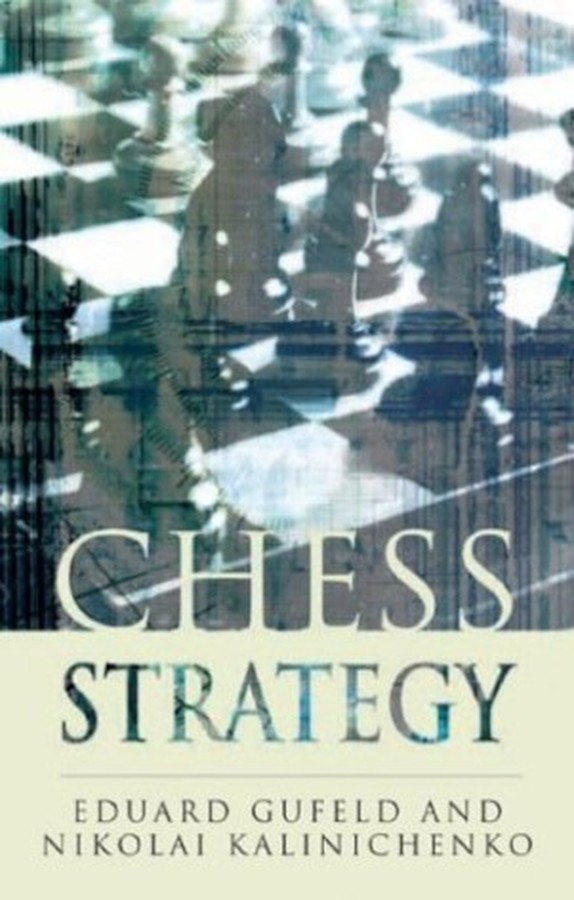| Utgivelsesdato | Oktober 2003 |
| Forfatter | |
| Pris | 255 NOK |
Chess Strategy (Batsford)
Innhold
005 Preface
007 Chapter 1: General Strategy
007 1. The Role of Positional Judgement
009 2. Methods of Positional Assessment
012 3. Comparative Strength of the Pieces
019 4. General Strategic Factors
019 (a) Weakened King Position
027 (b) Tempo Advantage
028 (c) Spatial advantage
032 (d) Restricted Range of Action of a Piece
034 (e) Vulnerability of Pieces
035 (f) Coordination and Dislocation of Pieces
036 (g) Weakness and Strength of the Pawn Formation
049 Chapter 2: Opening Strategy
049 1. Main Tasks of the Opening - General Deployment of Forces
065 2. Intuitive and Analytical Assessments: Their Role in the Opening
071 3. Gambit Systems and How to Evaluate Them
072 (a) Danish Gambit
074 (b) Centre Gambit
077 (c) Urusov Gambit
080 (d) Muzio-Polerio Gambit
081 (e) Nimzowitsch Counter-Gambit
085 (f) Morra Gambit
086 (g) Benko or Volga Gambit
095 (h) English Opening - Gambit Variation
099 (i) Kasparov Gambit
105 (j) A Gambit against the French Defence
109 4. Transition to the Middlegame
112 5. Opening Repertoires
114 Chapter 3: Middlegame Strategy
114 1. Features of the Middlegame
118 2. The Main Types of Middlegame Plan
121 3. One Side Attacks, the Other Plays for Material Gains
125 4. Mutual Attacks against the King
129 5. Both Sides Play for Material Gains
134 6. Multi-Pronged Strategy (Fighting on More Than One Front)
138 7. Switching between Plans
143 8. The Role of Exchanges
144 (a) Strategic Exchanges
149 (b) Psychological Exchanges
152 (c) Exchange of Queens
160 (d) Exchange of Dissimilar Material ("Equivalent" Exchanges)
161 (e) Queen against Other Pieces
169 (f) Co-ordination of Various Piece Groups
170 9. Sacrifices
170 (a) Classification of Sacrifices
172 (b) Bishops against Rooks
176 (c) Pawn Sacrifice for the Advantage of the Bishop Pair
182 (d) Positional Queen Sacrifice
189 Chapter 4: Endgame Strategy
189 1. General Laws of Endgames
190 2. Comparative Powers of the Pieces
195 3. A Basis for Systematic Study of the Endgame
201 4. Role of the Centre
205 5. Pawn Formation and the Role of Exchanges
209 6. Plans of Campaign in the Ending
210 (a) Playing for Material
214 (b) Creating a Passed Pawn
218 (c) Attacking with Sparse Material
225 (d) Playing for Stalemate
228 (e) Constructing a "Fortress"
232 (f) Elimination of All the Pawns
233 7. Rook endings
237 (a) All the Pawns on One Flank
251 (b) Outside Passed Pawn
007 Chapter 1: General Strategy
007 1. The Role of Positional Judgement
009 2. Methods of Positional Assessment
012 3. Comparative Strength of the Pieces
019 4. General Strategic Factors
019 (a) Weakened King Position
027 (b) Tempo Advantage
028 (c) Spatial advantage
032 (d) Restricted Range of Action of a Piece
034 (e) Vulnerability of Pieces
035 (f) Coordination and Dislocation of Pieces
036 (g) Weakness and Strength of the Pawn Formation
049 Chapter 2: Opening Strategy
049 1. Main Tasks of the Opening - General Deployment of Forces
065 2. Intuitive and Analytical Assessments: Their Role in the Opening
071 3. Gambit Systems and How to Evaluate Them
072 (a) Danish Gambit
074 (b) Centre Gambit
077 (c) Urusov Gambit
080 (d) Muzio-Polerio Gambit
081 (e) Nimzowitsch Counter-Gambit
085 (f) Morra Gambit
086 (g) Benko or Volga Gambit
095 (h) English Opening - Gambit Variation
099 (i) Kasparov Gambit
105 (j) A Gambit against the French Defence
109 4. Transition to the Middlegame
112 5. Opening Repertoires
114 Chapter 3: Middlegame Strategy
114 1. Features of the Middlegame
118 2. The Main Types of Middlegame Plan
121 3. One Side Attacks, the Other Plays for Material Gains
125 4. Mutual Attacks against the King
129 5. Both Sides Play for Material Gains
134 6. Multi-Pronged Strategy (Fighting on More Than One Front)
138 7. Switching between Plans
143 8. The Role of Exchanges
144 (a) Strategic Exchanges
149 (b) Psychological Exchanges
152 (c) Exchange of Queens
160 (d) Exchange of Dissimilar Material ("Equivalent" Exchanges)
161 (e) Queen against Other Pieces
169 (f) Co-ordination of Various Piece Groups
170 9. Sacrifices
170 (a) Classification of Sacrifices
172 (b) Bishops against Rooks
176 (c) Pawn Sacrifice for the Advantage of the Bishop Pair
182 (d) Positional Queen Sacrifice
189 Chapter 4: Endgame Strategy
189 1. General Laws of Endgames
190 2. Comparative Powers of the Pieces
195 3. A Basis for Systematic Study of the Endgame
201 4. Role of the Centre
205 5. Pawn Formation and the Role of Exchanges
209 6. Plans of Campaign in the Ending
210 (a) Playing for Material
214 (b) Creating a Passed Pawn
218 (c) Attacking with Sparse Material
225 (d) Playing for Stalemate
228 (e) Constructing a "Fortress"
232 (f) Elimination of All the Pawns
233 7. Rook endings
237 (a) All the Pawns on One Flank
251 (b) Outside Passed Pawn
| Innbundet? | Nei |
| Type | Bok |
| Språk | Engelsk |
| Antall sider | 272 |

